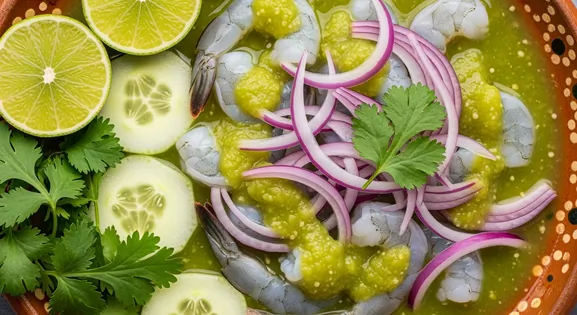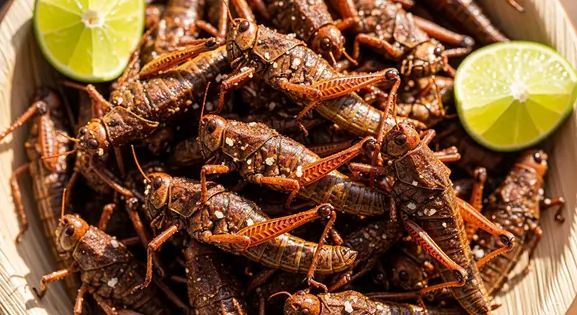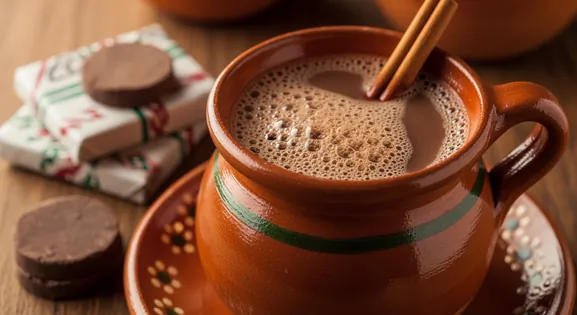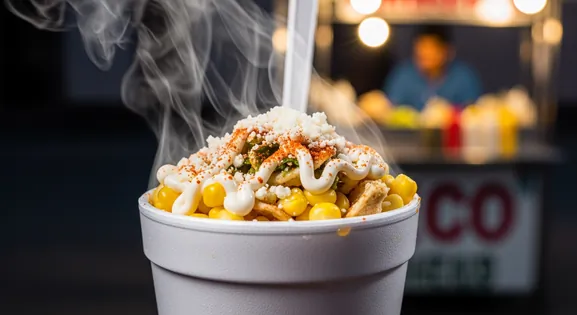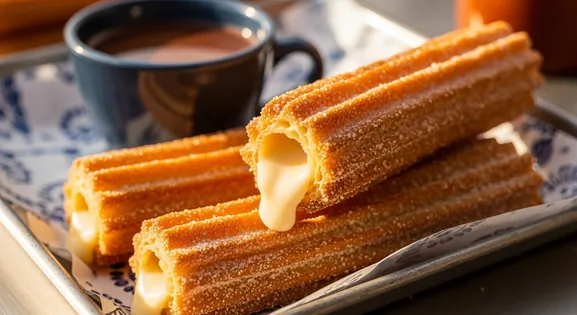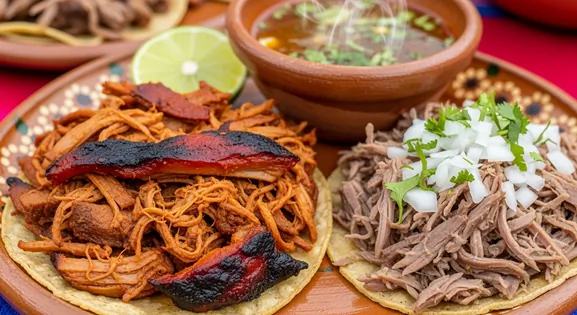Mezcal de Pechuga in Mexico: A Complete Food Lover's Guide
Mezcal de Pechuga
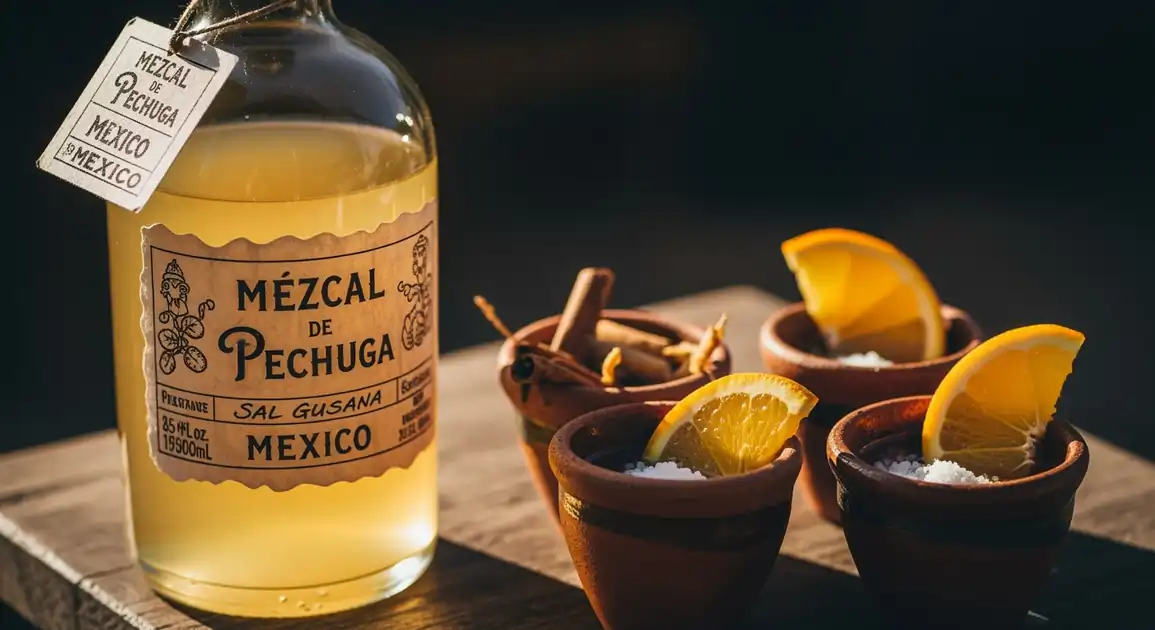
About Mezcal de Pechuga
Mezcal de Pechuga is a ceremonial Mexican spirit distinguished by its unique third distillation with a suspended raw chicken or turkey breast and locally harvested fruits, nuts, and spices. This labor-intensive process yields a complex, aromatic spirit with subtle savory notes balancing fruity, herbaceous, and smoky characteristics. Traditionally produced for celebrations and special occasions, authentic pechuga represents generations of mezcalero knowledge passed down through families, particularly in Oaxaca where this distinctive style originated.
Universal Quality Indicators
What to Look For
-
Proper certification and labeling
Authentic Mezcal de Pechuga should have a NOM number, Denominación de Origen seal, clear identification of the master mezcalero, agave type, and batch information.
-
Transparency about ingredients
Quality producers will openly share what fruits, spices, and type of meat were used in their pechuga. Vague descriptions may indicate mass production.
-
Clear liquid with natural variations
The mezcal should be clear to slightly amber with possible slight opalescence (pearly appearance). Avoid unnaturally colored or cloudy products.
-
Balanced complex aromas
Quality pechuga offers layered aromas of fruit, spice, subtle smoke, and delicate savory notes without harsh alcohol smell or artificial fragrances.
-
Appropriate price point
True Mezcal de Pechuga is labor-intensive and uses quality ingredients. Be suspicious of unusually cheap bottles ($50 or less), which likely aren't authentic pechuga.
What to avoid
-
Mass-produced bottles with identical batches
True pechuga is produced in small batches with slight variations between productions. Perfectly consistent industrial versions miss the essence of traditional pechuga.
-
Excessive marketing focusing on the meat aspect
Authentic producers understand the chicken/turkey breast is just one element of a complex process, not a gimmick. Overhyping the meat component often signals products targeted at tourists.
-
Added colorings or evident impurities
Quality mezcal should never contain visible impurities, artificial colors, or floating particles. These indicate poor production standards.
-
Extremely high or low alcohol content
Traditional Mezcal de Pechuga typically ranges from 45-55% ABV (alcohol by volume). Significantly lower levels may indicate dilution; much higher could suggest poor distillation.
-
Claims of age/añejo pechuga
Traditional pechuga is rarely aged in wood as the third distillation already creates complexity. 'Aged pechuga' usually indicates modern interpretations or marketing gimmicks.
How to Order Mezcal de Pechuga
What to Serve with This Dish
Orange Slices with Sal de Gusano
Fruit
The sweetness and acidity of fresh orange slices, complemented by the savory, earthy, and slightly spicy "worm salt," cleanse the palate and enhance the complex notes of the mezcal.
Oaxacan Chocolate
Dessert
The rich, dark, and often slightly bitter notes of traditional Oaxacan chocolate provide a luxurious contrast to the smoky and fruity profile of Mezcal de Pechuga, creating a harmonious sensory experience.
Explore Mezcal de Pechuga in Detail: City Guides
Discover where to find the best Mezcal de Pechuga and learn local tips in these cities:
History and Origins
Mezcal de Pechuga emerged from indigenous Mexican distillation traditions dating back centuries. Its distinctive technique of using poultry during distillation likely developed as both a filtering method and a way to balance the spirit's flavor profile. Historically produced for weddings, baptisms, and major celebrations, pechuga represented the pinnacle of a mezcalero's craft. While traditionally made seasonally when fruits were abundant (often during Day of the Dead celebrations), modern demand has led some producers to make it year-round while still honoring ancestral methods. Despite growing international popularity, authentic pechuga remains primarily produced by family palenques using techniques passed through generations.
Crafting the Perfect Dish
Mezcal de Pechuga production begins like traditional mezcal: agave hearts (primarily espadín) are roasted in earthen pits, crushed, fermented naturally, and distilled twice. What distinguishes pechuga is the crucial third distillation where a raw chicken or turkey breast is suspended in the vapor path of the still, never touching the liquid. Simultaneously, a carefully selected medley of seasonal fruits (like apples, plums, pineapple), local herbs, and spices or nuts are added. During this 24-36 hour distillation, the meat proteins interact with the vapor, filtering impurities and imparting subtle savory notes that balance the fruit additions. After distillation, the meat is removed and discarded, and the spirit rests before bottling.
Key Ingredients of Mezcal de Pechuga
Agave Espadín
The primary agave variety used for Mezcal de Pechuga, known for its balanced flavor profile and relatively quick maturation. It provides the foundational sweetness and earthiness.
Quality indicator: Look for mezcals specifying "Agave Espadín" or other specific agave varieties, indicating careful selection. Avoid generic "agave" labels.
Seasonal Fruits & Spices
A diverse array of local fruits (like apples, plums, pineapple, bananas) and spices are added during the third distillation, imparting complex aromatic and flavor notes.
Quality indicator: Producers should be transparent about the specific fruits and spices used, reflecting local seasonality and traditional recipes.
Poultry Breast (Chicken/Turkey)
A raw chicken or turkey breast is suspended in the still during the third distillation. While not consumed, its proteins interact with the vapor, filtering impurities and contributing subtle savory notes.
Quality indicator: Authentic pechuga uses a whole, raw breast, not processed meat. The quality is reflected in the delicate balance it brings to the final spirit.
Local Mezcal de Pechuga Variations in Mexico
Traditional Chicken Pechuga
The most common variation using a suspended chicken breast during the third distillation, typically combined with seasonal fruits and spices.
Turkey Pechuga
Considered by some to be more traditional and complex, using turkey breast instead of chicken. Often produced for major celebrations and may command higher prices.
Game Bird Pechuga
Rare variations using wild game birds like quail or pheasant. Typically produced in very limited quantities by traditional mezcaleros for special occasions.
Rabbit Pechuga
A regional variation where rabbit meat is used instead of poultry. Creates a different protein interaction during distillation, resulting in unique flavor characteristics.
Fruit-Forward Pechuga
Emphasizes the fruit component during the third distillation, using a more abundant or diverse selection of fruits while maintaining the traditional meat element.
Venison Pechuga
A rare specialty using deer meat, typically produced in mountainous regions and considered especially premium and ceremonial.
Dietary Information
Dietary Information
Important Note for Travelers: Your safety is our priority. Below are the common allergens associated with the traditional preparation of this dish. However, recipes and ingredients can vary significantly between establishments. Always confirm all ingredients directly with the food vendor before ordering, especially if you have a severe allergy.
Potential Allergens
Dietary Suitability
Frequently Asked Questions about Mezcal de Pechuga
What is Mezcal de Pechuga?
Mezcal de Pechuga ('breast mezcal') is a traditional Mexican spirit. It undergoes a unique third distillation where a raw chicken or turkey breast is suspended in the still, along with local fruits, nuts, and spices. The meat's proteins filter impurities and add subtle savory notes, making it a complex, ceremonial spirit for special occasions.
How is Mezcal de Pechuga different from regular mezcal?
Unlike regular mezcal's two distillations, Pechuga undergoes a third, unique distillation. A raw poultry breast is suspended in the vapor path, and seasonal fruits, nuts, and spices are added. This process creates a more complex flavor profile with subtle savory notes, resulting in a smoother, more aromatic spirit traditionally reserved for celebrations.
Is Mezcal de Pechuga safe to drink?
Authentic Mezcal de Pechuga from reputable producers is generally safe. The distillation process (around 80°C/175°F) eliminates pathogens from the raw meat. Quality varies, so look for proper certification (NOM number), clear labeling, and reputable producers. Small family palenques often maintain good sanitation. The high alcohol content (45-55% ABV) also contributes to its stability.
How should I drink Mezcal de Pechuga?
Sip Mezcal de Pechuga slowly from traditional clay or glass copitas at room temperature to fully appreciate its complex aromas and flavors. It's typically enjoyed neat, without ice. Many Mexicans perform a ritual, such as spilling a small amount on the ground as an offering. Orange slices with sal de gusano are traditional accompaniments.
Does Mezcal de Pechuga contain actual meat?
Authentic Mezcal de Pechuga uses raw chicken or turkey breast during the third distillation. The meat doesn't remain in the final product; its proteins interact with the vapor, acting as a filter and imparting subtle savory notes. It's discarded after distillation. While not present in the final liquid, its use means it's an animal-derived ingredient.
How can I identify quality Mezcal de Pechuga?
Identify quality by checking for proper certification (NOM number, Denominación de Origen seal) and clear labeling of the master mezcalero, agave type, and production date. Authentic pechuga offers transparency about ingredients, complex yet balanced aromas, and a smooth mouthfeel despite high ABV (45-55%). A reasonable price ($75-200+ USD) is also a key indicator, as cheap bottles are rarely authentic.
Expert How-To Guides about Mezcal de Pechuga
How to Spot Authentic Mezcal de Pechuga
Learn to identify genuine artisanal Mezcal de Pechuga and avoid industrialized imitations by understanding key quality indicators and labeling details.
- Check for proper certification – authentic bottles should display a NOM number and the Denominación de Origen seal.
- Look for transparency – quality producers proudly list the master mezcalero's name, agave type (typically espadín), batch number, and production date.
- Examine bottle details – artisanal mezcals often feature hand-written labels, traditional bottle shapes, and natural variations in color.
- Verify ingredients – legitimate producers will mention what fruits, herbs, and type of meat were used in the third distillation.
- Consider the price – authentic Mezcal de Pechuga is labor-intensive and typically costs between 1500-4000 pesos ($75-200+ USD) per bottle. Suspiciously cheap versions are likely not true pechuga.
- Assess the color – it should be clear to slightly amber/golden without artificial coloring. Slightly opalescent appearance is natural.
The Proper Way to Taste Mezcal de Pechuga
Experience Mezcal de Pechuga as Mexicans do with these traditional tasting customs, enhancing your appreciation for its nuanced flavors.
- Use the right vessel – traditional small clay or glass copitas allow proper appreciation of aromas and flavors.
- Serve at room temperature – never chilled, as cold temperatures mask the complex flavor profile.
- Observe the appearance – note clarity, viscosity, and 'pearling' (bubbles that form when shaken, indicating proper alcohol content).
- Smell before tasting – hold the copita a few inches from your nose and inhale gently to capture the complex aromas of fruit, spice, smoke, and subtle savory notes.
- Sip very small amounts – let the mezcal coat your entire mouth to experience all flavor dimensions.
- Accompany with traditional palate cleansers – orange slices dusted with sal de gusano (worm salt) between sips.
- Take your time – a single copita should last 20-30 minutes, allowing you to experience how the flavors evolve as the spirit breathes.
Visiting a Traditional Palenque (Mezcal Distillery)
Get the most from visiting the source of Mezcal de Pechuga production by understanding the cultural significance and practical aspects of a palenque visit.
- Arrange visits in advance – many family palenques welcome visitors but operate on traditional schedules; contact them beforehand.
- Respect the process – mezcal production is considered sacred in many communities. Ask permission before taking photos.
- Watch for traditional methods – authentic pechuga production involves clay pot stills, copper condensers, and the distinctive suspending of meat in the vapor path.
- Ask about seasonality – traditional producers make pechuga only at certain times when specific fruits are available.
- Inquire about family history – many palenques have stories spanning generations that enhance understanding of their mezcal.
- Be prepared to purchase – direct buying from palenques supports traditional production methods and families; bring cash as credit cards are rarely accepted.
- Arrange transportation – many palenques are in remote locations, so organize reliable transport, especially if planning to sample mezcals.
Our Commitment to Quality
At Tasteplorers, our mission is to provide the most accurate and useful travel information in the world. To achieve this, all content on this site is created through our unique editorial framework. We utilize leading AI research tools, guided by our proprietary prompts, and a multi-stage validation process. This entire system is overseen by our editorial team to ensure everything we publish meets our high standards for accuracy, cultural nuance, and practical value for travelers.
Learn more about our Editorial Process and our Mission.
Explore regions
Europe
Discover Europe's diverse culinary landscape, from Mediterranean flavors to hearty Alpine fare. Learn to navigate markets, decode menus, and eat like a local.
Latin America & Caribbean
Discover the vibrant cuisines of Latin America & the Caribbean. Our expert guide covers everything from Mexican street food to Peruvian ceviche and market tips.
Oceania
Explore Oceania's diverse food scene. Learn about Polynesian earth ovens, Fijian feasts, and the vibrant café culture of Australia and New Zealand.
Southeast Asia
Explore Southeast Asia's diverse food cultures from Thailand to Vietnam. Get expert tips on navigating spice levels, choosing quality vendors, and understanding the rich traditions of the region.
